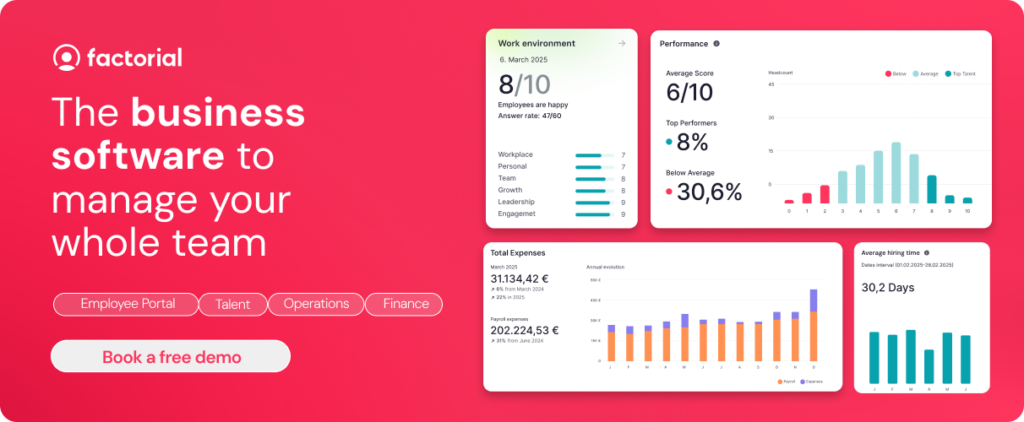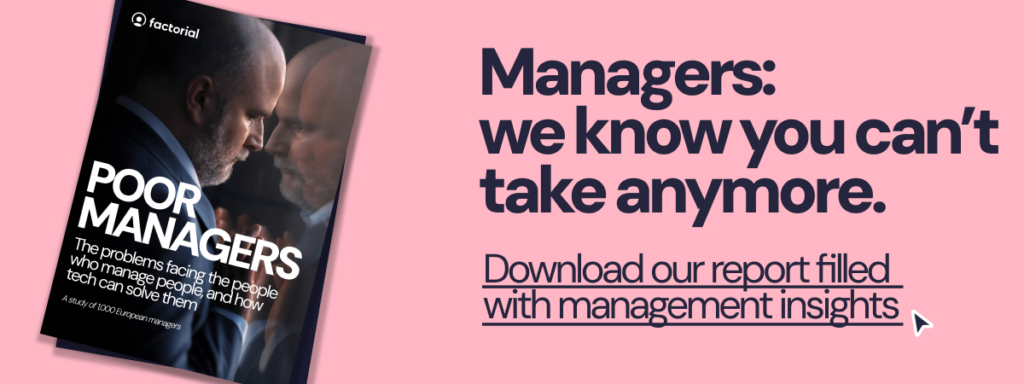Sweaty palms, pounding heart, feeling restless, hopeless, and isolated. Performance anxiety at work means unhappy employees who aren’t performing to the best of their abilities. Whether it is because of stress in the workplace or the general climate of uncertainty, performance anxiety is on the rise, and managers need to face the problem head-on.
How can businesses combat performance anxiety and support employee well-being? In this post, we’ll cover everything you need to know about anxiety, its causes, effects— and solutions. Sometimes, alleviating performance anxiety requires more than wellness programs. Let’s dive into what causes it and what negative effects could occur.

What is Performance Anxiety at Work?
Anxiety disorders are among the most common mental health issues, with the World Health Organization estimating that 260 million people live with anxiety worldwide. In the workplace, performance anxiety occurs when an employee gets hung up on other people’s opinions rather than the actual task at hand. Employees report suffering from performance anxiety when they’re in the spotlight, for example during a job interview, while negotiating a wage increase, dealing with conflicts, or giving a presentation.
According to Psychology Today, performance anxiety doesn’t strike because a task is outside an employee’s skill range. Instead, it happens because your “worry system” is in overdrive.
Of course, it may seem normal to feel anxiety when a facing high-stake situation, such as a job interview. But poor workplace policies can lead to more constant anxiety. A crushing workload, pushy manager, or unreasonable work hours can push employees to the brink.
Stunningly, 87% of employees deal with performance anxiety at work. That means trembling, sweating, dry mouth, and a pounding heart. Those suffering from performance anxiety may feel also jittery or sluggish or have trouble sleeping. What’s worse, workplace anxiety doesn’t just diminish employee productivity and effectiveness in the office. It can also have big implications for their home life and their work/life balance.
The Impact of Workplace Anxiety
Those suffering from performance anxiety at work may have difficulty working with colleagues and clients and trouble concentrating. They are too preoccupied with fear to focus on their work and may turn down assignments because of their fear of failure. These employees will have reduced job satisfaction, confidence, which will therefore affect their job performance.
An organization that doesn’t work to limit the effects of performance anxiety won’t just have unhappy, less productive employees. They will also have a high employee turnover rate as employees seek more satisfying work elsewhere. This will ultimately damage the company’s image and positions will be hard to fill as prospective employees see that the company doesn’t prioritize employee well-being. Taking care of employee mental health isn’t just the right thing to do— it’s a good business strategy.
Anxiety at Work Skyrocketed in 2020
Performance anxiety was already on the rise before 2020, but this year it has hit especially hard. Employees struggle to handle demanding jobs while also adjusting to remote work and dealing with the stress of the pandemic.
Remote work may be to blame. A July survey from Monster showed that over two-thirds of employees (69%) are experiencing burnout while working from home. That already marked a large increase of the 20% who reported burnout in a similar survey in May. Why does working from home seem to be making performance anxiety worse?
The stress of self-management, the challenges of balancing childcare with work responsibilities, and the social isolation of remote work are all to blame. 45% of employees who have gone remote report that they feel less “mentally healthy” working from home. They also report finding it difficult to unplug after work and to sleep at night. These employees are more likely to feel lonely and isolated, and to suffer from performance anxiety at work.
This has lead to drastic changes in the lifestyles of employees. A snap survey of 500 home workers by the Institute for Employment Studies in the UK found that 20% of respondents are consuming more alcohol. A third say they are eating less healthily, 60% report doing less exercise.
Clearly, an intervention is in order. But what can managers do to create a healthy work environment for employees?
Check here our Performance Management Feature!
Tips to Beat Performance Work Anxiety
As we navigate various transitions over the coming months and years, businesses need to create systems to help employees struggling with anxiety, depression, burnout, and trauma. In order to limit performance anxiety at work, managers must offer personalized and structural support.
Provide Mental Health Resources
A survey of 1,000 Americans published by TELUS International indicates that 80% of workers would consider leaving their current position for a job that prioritized employee mental health. Managers can encourage employees to take advantage of stress-management webinars and wellness programs. They can provide access to online yoga or meditation classes or help employees make use of therapy apps. Most of all, employers can create a positive environment where employees feel able to voice and address their mental health struggles. Even with all the apps, tools, and webinars in the world, employees may still be struggling. Bringing patience and understanding to the workplace is a must.
Build In Flexibility
Remote work has some serious downsides but let’s not forget one of the biggest perks. 40% of remote workers see flexibility as the biggest benefit. Employers can make the most of this and provide employees the flexibility to organize their own schedules around their other obligations. Does an employee need to care for children in the afternoon? Is one responsible for an elderly parent they check on in the morning? Employees who can set their own schedules won’t just be more productive. They’ll also be more satisfied and happier in their position. On average, the workday is nearly an hour longer for at-home workers. Is your organization providing flexibility for employees to deal with this increase?
Check-in With Employees
It is vital that management stay connected to employees during this time. Harvard Business Review recommends that employers make the most of this moment by “normalizing mental health challenges.” Managers should be honest about their own mental health struggles and in so doing, invite employees to be honest about their own. Checking in regularly with employees is also key; it can be difficult to see if someone is struggling through a screen. Make sure to ask employees how they are, what they need, and how you can support them.
Offer Training
Provide proactive and preventative workplace mental health training for everyone at your organization, including leaders, managers, and individual employees. As increasing numbers of employees struggle with mental health issues, it’s important to take steps to reduce stigma and debunk common myths. In short, all members of the organization must build the skills to have productive conversations about mental health at work.
Update Policies & Stay Agile
Toxic culture, excessive demands, and unhealthy pressures can all be sources of work-related stress and anxiety. So your team should conduct regular surveys to understand what is stressing employees. Make sure to modify policies and practices to reflect your findings. Shape new programs that enhance health and well-being support for employees. For example, you may need to reevaluate rules around flexible hours, paid time off, and communication. A kind and conscientious workplace will help reduce performance anxiety at work.
Support your Managers to avoid Performance Anxiety
It’s not just team members who get performance anxiety. It’s also managers, and likely your manager, and their manager too. We spoke with over 1,000 managers to better understand the day-to-day realities and hidden stressors that come with leading a team.
To dive deeper into what today’s managers are really up against, we’ve put together a free eBook packed with insights from European countries. We’ve even included solutions to help ease your performance anxiety and make managing easier. Whether you’re a manager yourself or work alongside one, this guide will help you better understand the pressures they face. And more importantly, how to support them. Download it now to learn how to create a healthier, more resilient management culture.




